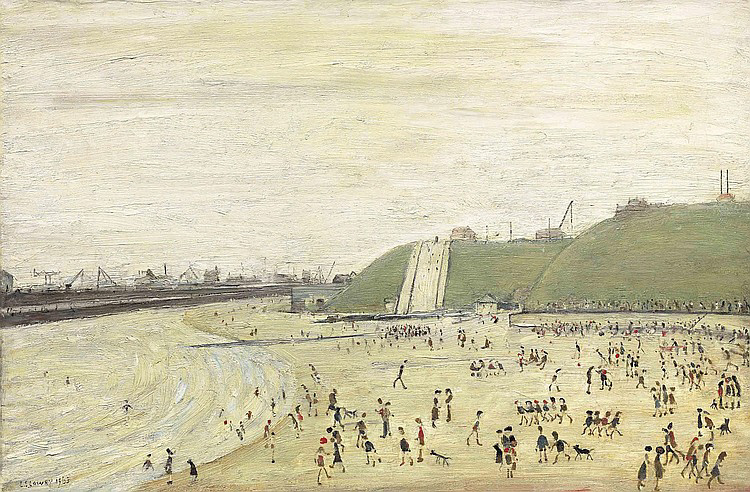Beach at Roker
L.S. Lowry
R.B.A., R.A.
Price Realized
£301,250 ($474,770)
Estimate
£250,000 - £350,000 ($394,000 - $551,600)
Laurence Stephen Lowry, R.A. (1887-1976)
The Beach at Roker
signed and dated 'L.S. LOWRY 1963' (lower left)
oil on canvas
20 x 30 in. (50.8 x 76.2 cm.)
Provenance
Purchased by the present owner at the 1964 exhibition.
Property from the Estate of Raymond Montague Burton
Literature
Exhibition catalogue, Recent Paintings by L.S. Lowry, London, Lefevre Gallery, 1964, no. 8, illustrated, as 'The Beach at Rother'.
Exhibited
London, Lefevre Gallery, Recent Paintings by L.S. Lowry, June - July 1964, no. 8, as 'The Beach at Rother'.
Roker is a tourist resort and affluent area of Sunderland, North East England, bounded on the south by the River Wear and Monkwearmouth,
on the east by the North Sea, to the west by Fulwell and on the north by Seaburn.
It is administered as part of the City of Sunderland.
Roker is a tourist resort and affluent area of Sunderland, North East England, bounded on the south by the River Wear and Monkwearmouth, on the east by the North Sea, to the west by Fulwell and on the north by Seaburn. It is administered as part of the City of Sunderland. The story of Roker begins in 1587, when the Abbs family were granted land on the north side of the River Wear on the condition that they provided six soldiers to defend the mouth of the river. Fast forward to 1840, when Roker Terrace was built upon the cliff tops, along with Monkwearmouth baths and Roker Park soon after. The pier and lower promenade were built six years later. In 1898 Roker Park Stadium was built and Roker became known worldwide for being home to Sunderland A.F.C.. The stadium was used for ninety-nine years until 1997. In the early 20th century Roker became a hugely popular resort for locals and tourists alike, and in 1928 it was taken over by the Borough of Sunderland, along with Fulwell and Seaburn.
the signed limited edition prints and paintings by wildlife artist David Shepherd,Also the work of Sir William Russell Flint whose paintings and signed limited edition prints are in great demand.
Famous for his portraits of Cecilia, Flint's greastest works illustrate the architecture and landscape throughout rural France
holiday home near Brantome, in the area of Dordogne is ideally situated to enjoy the France.
The work of Mr L.S. Lowry has become of great artistic and financial importance of recent years. A selection of his signed prints and original drawings can be viewed and bought here
Our aim is to offer our clients an excellent service at unbeatable prices.